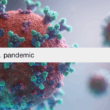
In a world obsessed with appearance and constantly bombarded by images of unrealistic beauty standards, it’s no wonder that many individuals struggle with body image issues. However, for some, this preoccupation goes beyond the occasional insecurity and develops into a debilitating condition known as Body Dysmorphic Disorder (BDD).
Unmasking the underlying causes for body dysmorphic disorder is crucial to provide understanding and support for those affected by this often misunderstood disorder. In this article, we will delve into the depths of BDD, exploring the psychological and societal factors that contribute to its development. e.
What is Body Dysmorphic Disorder (BDD)?
Body Dysmorphic Disorder (BDD) is a mental health condition characterized by obsessive thoughts and preoccupations with perceived flaws in one’s appearance. These flaws, often minor or imagined, cause significant distress and impairment in daily functioning. Individuals with BDD may spend hours each day obsessing over their appearance, engaging in excessive grooming, seeking reassurance, or avoiding social situations altogether.
BDD can affect any body part, with common areas of concern including the skin, nose, hair, and weight. It is important to note that BDD is not simply vanity or low self-esteem—it is a psychiatric disorder that requires professional intervention.
BDD often begins in adolescence or early adulthood and can persist for years if left untreated. The severity of symptoms can vary, with some individuals experiencing mild distress and others completely consumed by their perceived flaws. It is important to recognize that BDD is not a personal choice or a reflection of vanity—it is a serious mental health condition that requires understanding and support.
BDD’s exact cause is unknown, but research suggests a combination of genetic, neurobiological, and environmental factors contribute to its development. In the following section, let’s explore these causes and risk factors more thoroughly.
Signs and symptoms of Body Dysmorphic Disorder
Recognizing the signs and symptoms of Body Dysmorphic Disorder (BDD) is crucial for early intervention and treatment. While the specific symptoms may vary from person to person, there are common patterns that can help identify BDD. Individuals with BDD often exhibit the following signs:
1. Preoccupation with perceived flaws: Constantly thinking about or obsessing over minor or imagined flaws in their appearance. These perceived flaws may not be noticeable to others, but they cause significant distress to the individual.
2. Excessive mirror checking: Spending excessive time in front of mirrors, scrutinizing their appearance from different angles, and trying to fix or hide perceived flaws.
3. Avoidance of social situations: Withdrawing from social activities or avoiding problems where others may scrutinize or judge their appearance.
4. Excessive grooming or seeking reassurance: Engaging in excessive grooming behaviors, such as constantly fixing hair, applying makeup, or seeking relief from others about their appearance.
5. Comparing oneself to others: Constantly comparing their appearance to others and feeling inferior or inadequate.
6. Decreased quality of life: BDD can significantly impact an individual’s quality of life, leading to feelings of depression, anxiety, and social isolation.
It is important to note that individuals with BDD may go to great lengths to hide their symptoms, making it difficult for others to recognize the severity of their struggles. The next section will explore the prevalence and demographics of BDD to shed light on the scope of this disorder.
Prevalence and demographics of Body Dysmorphic Disorder
Body Dysmorphic Disorder (BDD) is more common than one might think, yet it often goes undiagnosed or misdiagnosed. According to research, the prevalence of BDD in the general population is estimated to be around 1-2%. However, it is important to note that this number may be higher due to underreporting and a lack of awareness surrounding the disorder.
BDD can affect individuals of all ages, genders, and ethnicities. However, certain demographic factors may increase the risk of developing BDD. For example, studies have shown that BDD is more common in females than males, with a male-to-female ratio of approximately 1:3. Additionally, individuals with a history of childhood trauma or abuse may be more susceptible to developing BDD later in life.
It is important to recognize that BDD does not discriminate and can affect individuals from all walks of life. By understanding the prevalence and demographics of BDD, we can better identify and support those who may be struggling with this disorder.
Causes and risk factors of Body Dysmorphic Disorder
The development of Body Dysmorphic Disorder (BDD) is complex and multifaceted, involving genetic, neurobiological, and environmental factors. While the exact cause of BDD is still unknown, researchers have identified several potential risk factors that may contribute to its development:
1. Genetic predisposition: There is evidence to suggest that BDD may have a genetic component, as it often runs in families. However, specific genes or genetic markers associated with BDD have yet to be identified.
2. Neurobiological factors: Neuroimaging studies have shown differences in brain structure and function in individuals with BDD compared to those without the disorder. These differences may contribute to the obsessive thoughts and preoccupations characteristic of BDD.
3. Environmental factors: Societal and cultural influences play a significant role in the development of BDD. The constant exposure to unrealistic beauty standards through media and social media can contribute to feelings of inadequacy and body dissatisfaction.
4. Psychological factors: Individuals with BDD often have underlying psychological conditions, such as depression, anxiety, or obsessive-compulsive disorder (OCD). These conditions may interact with BDD, exacerbating symptoms and making treatment more challenging.
It is important to recognize that BDD is not caused by a single factor but rather a combination of genetic, neurobiological, and environmental influences. By understanding these underlying causes and risk factors, we can better tailor treatment and support for individuals with BDD.
The relationship between Body Dysmorphic Disorder and other mental health conditions
Body Dysmorphic Disorder (BDD) is often accompanied by other mental health conditions, further complicating the diagnosis and treatment process. The most common co-occurring conditions include depression, anxiety, and obsessive-compulsive disorder (OCD). These conditions often interact with BDD, intensifying symptoms and making it more challenging to manage the disease.
Depression is commonly seen in individuals with BDD, as the constant preoccupation with perceived flaws can lead to feelings of hopelessness, low self-worth, and a distorted self-image. Anxiety disorders, particularly social anxiety disorder, are also prevalent among individuals with BDD, as the fear of being judged or ridiculed for their appearance can be overwhelming. OCD, similar to BDD regarding obsessive thoughts and compulsive behaviors, may further exacerbate symptoms and complicate treatment.
The presence of these co-occurring conditions highlights the importance of a comprehensive treatment approach that addresses the symptoms of BDD and the underlying mental health conditions. Integrating cognitive-behavioral therapy (CBT), medication management, and support groups can give individuals the tools and resources to manage their symptoms effectively.
Diagnosing Body Dysmorphic Disorder
Diagnosing Body Dysmorphic Disorder (BDD) can be challenging due to the secretive nature of the disorder and the overlap of symptoms with other mental health conditions. However, early diagnosis is crucial for effective treatment and support. Mental health professionals use specific criteria outlined in the Diagnostic and Statistical Manual of Mental Disorders (DSM-5) to diagnose BDD. These criteria include:
1. Preoccupation with perceived flaws: The individual is overly concerned with one or more perceived defects or faults in their physical appearance.
2. Significant distress or impairment: The preoccupation with perceived flaws causes significant distress or impairment in social, occupational, or other areas of functioning.
3. Repetitive behaviors or mental acts: The individual engages in repetitive behaviors or mental actions in response to their appearance concerns. These behaviors are not better explained by problems with body fat or weight in an individual diagnosed with an eating disorder.
To receive a diagnosis of BDD, these symptoms must persist for a significant period (e.g., at least one hour per day) and cause considerable distress or impairment in daily functioning. It is important to consult with a qualified mental health professional for an accurate diagnosis and appropriate treatment options.
Treatment options for Body Dysmorphic Disorder
Treating Body Dysmorphic Disorder (BDD) requires a multifaceted approach that addresses the disorder’s physical and psychological aspects. While there is no one-size-fits-all treatment for BDD, several evidence-based interventions have shown promise in helping individuals manage their symptoms and improve their quality of life:
1. Cognitive-behavioral therapy (CBT): CBT is the gold standard treatment for BDD and focuses on challenging distorted thoughts and beliefs about one’s appearance. Through treatment, individuals learn to identify and modify negative thought patterns, develop healthy coping strategies, and gradually confront their fears and avoidance behaviors.
2. Medication: In some cases, medication may be prescribed to help manage the symptoms of BDD. Selective serotonin reuptake inhibitors (SSRIs), a class of antidepressant drugs, have effectively reduced obsessive thoughts and compulsive behaviors associated with BDD.
3. Supportive therapy: Individual or group therapy can provide a safe and supportive environment for individuals with BDD to share their experiences, gain insight, and receive validation. Support groups, specifically tailored for individuals with BDD, can be particularly helpful in reducing feelings of isolation and building a sense of community.
4. Complementary therapies: Some individuals find complementary therapies, such as mindfulness, yoga, or art therapy, helpful in managing stress and improving self-esteem. These therapies can be used with traditional treatments to enhance overall well-being.
It is important to note that treatment for BDD is often long-term and requires ongoing support. Individuals with BDD can learn to manage their symptoms effectively and regain control over their lives with the right combination of therapies and a supportive treatment team.
Support and resources for individuals with Body Dysmorphic Disorder
Finding support and resources is essential for individuals with Body Dysmorphic Disorder (BDD) and their loved ones. Here are some avenues of support and resources that can help:
1. Mental health professionals: Consult with a qualified mental health professional, such as a psychiatrist or psychologist specializing in BDD. They can diagnose accurately, develop a personalized treatment plan, and offer ongoing support.
2. Support groups: Joining a support group specifically for individuals with BDD can provide a sense of belonging, validation, and shared experiences. These groups can be in-person or online, offering a safe space for individuals to connect and support each other.
3. Educational resources: Numerous books, websites, and online resources are dedicated to BDD that can provide valuable information and support. These resources can help individuals and their loved ones better understand the disorder and learn coping strategies.
4. Non-profit organizations: Non-profit organizations dedicated to mental health, such as the International OCD Foundation and BDD Foundation, offer resources, support, and advocacy for individuals with BDD. They often provide helplines, online forums, and educational materials.
Remember, seeking support is not a sign of weakness but a courageous step toward healing and recovery. By accessing the right support and resources, individuals with BDD can find the understanding and guidance they need to navigate their journey toward well-being.
How to help someone with Body Dysmorphic Disorder
Supporting someone with Body Dysmorphic Disorder (BDD) requires empathy, patience, and understanding. Here are some ways you can help:
1. Educate yourself: Take the time to learn about BDD, its symptoms, and its impact on individuals’ lives. Understanding the disorder will enable you to provide informed support and reduce stigma.
2. Listen actively: Be compassionate and allow individuals to express their feelings without judgment. Avoid offering unsolicited advice or dismissing their concerns.
3. Encourage professional help: Encourage the individual to seek professional help from a qualified mental health professional specializing in BDD. Offer to help them find suitable treatment options and accompany them to appointments.
4. Be patient: Recovery from BDD takes time, and setbacks may occur. Offer your support and understanding, even during difficult times.
5. Promote self-care: Encourage the individual to engage in self-care activities that promote overall well-being. This may include regular exercise, healthy eating, getting enough sleep, and engaging in activities they enjoy.
6. Normalize seeking help: Emphasize that seeking help for mental health concerns is a sign of strength and courage. To inspire hope, share stories of individuals who have successfully overcome BDD or other mental health conditions.
Remember, your role as a supporter is to be a source of understanding and encouragement. By offering your support, you can make a significant difference in someone’s journey toward recovery.
Frequently Asked Questions
Can childhood experiences cause Body Dysmorphic Disorder?
Yes, negative experiences in childhood, such as bullying or teasing, can contribute to the development of BDD. These experiences can lead to a distorted self-image and an obsession with perceived flaws.
Does culture play a role in Body Dysmorphic Disorder?
Cultural factors can contribute to BDD. Societies that place a high value on physical appearance may inadvertently encourage the development of the disorder. The media's emphasis on idealized bodies and looks can also play a role.
Can Body Dysmorphic Disorder be caused by a chemical imbalance in the brain?
Some research suggests that BDD may be linked to imbalances in the brain's neurotransmitters, particularly serotonin. However, more research is needed to understand this connection fully.
Can trauma cause Body Dysmorphic Disorder?
Trauma doesn't directly cause BDD but can be a risk factor. People who have experienced trauma, particularly concerning appearance, may be more likely to develop BDD.
Conclusion
Body Dysmorphic Disorder (BDD) is a complex and misunderstood mental health condition affecting individuals of all ages, genders, and ethnicities. By unmasking the underlying causes of BDD and understanding its impact on individuals’ lives, we can foster empathy, compassion, and support for those living with this invisible battle. Recognizing the signs and symptoms, understanding the prevalence and demographics, and identifying BDD’s causes and risk factors are crucial steps toward early intervention and effective treatment. With proper diagnosis, evidence-based treatment options, and a supportive network, individuals with BDD can learn to manage their symptoms, improve their quality of life, and regain control over their lives. Let us continue to raise awareness, reduce stigma, and provide the understanding and support needed to help individuals with BDD on their journey toward healing and recovery.



